#tirumular
Explore tagged Tumblr posts
Text

youtube
#tirumular#nayanar#kailash#3000#years#cowherd#grief#stange#bliss#siddhar#denmark#tamil nadu#lord shiva#temple#flowers#left#hand#solbrud#III#black metal#one of the sixty-three Nayanars#Tamil Poet-Saints
5 notes
·
View notes
Text

"The yogin cannot be a bhogin, and a bhogin cannot be a knower of Yoga. However, O Beloved, [the path of] Kaula, which is superior to everything, is of the essence of bhoga and yoga.
"O Mistress of the kulal In the kula teaching bhoga is directly conducive to yoga, sin is conducive to good karma, and the world is conducive to liberation."
~Kula-Arnava-Tantra (2.23 - 24)
"Those who let the body decay, destroy the spirit; and they won't attain the powerful knowledge of truth. Having learned the skill of fostering the body, I fostered the body, and I nurtured the soul.
"Formerly I thought that the body was foul. I saw that there was Ultimate Reality within the body. The Perfect One has entered the temple of the body. I protected and preserved my body."
~Tantrika Tirumular
6 notes
·
View notes
Text
The Phenomena of Walk-Ins
A walk-in is a New Age concept of a person whose original soul has departed their body and has been replaced with a new, different, soul. Ruth Montgomery popularized the concept in her 1979 book Strangers Among Us.
Believers maintain that it is possible for the original soul of a human to leave a person's body and for another soul to "walk in". In Montgomery's work, souls are said to "walk in" during a period of intense personal problems on the part of the departing soul, or during or because of an accident or trauma. Some other walk-ins describe their entry as occurring based on prior agreement and when the previous soul was complete. The walk-in being/individual retains the memories of the original personality, but does not have emotions associated with the memories. As they integrate, they bring their own mental, emotional, spiritual consciousness and evolve the life to resonate with their purpose and intentions. Incarnating into a fully grown body allows the walk-in soul to engage in embodiment without having to go through the two decades of maturation that humans need to reach adulthood. A walk-in soul also does not experience the conditioning of childhood and has a different relationship to life because they were not born.
[source: the info above is found in Wikipedia]
Facts about Walk-ins:
Soul exchanges can occur at any age of a person, not just at birth.
The inbound (walk-in) Soul becomes responsible for the body it’s “walking into” and completes that life.
The walk-in Soul doesn’t always displace the Soul that’s already there. It may be braided into the same vessel and share responsibilities with the existing Soul.
Permission of both the Souls involved must be secured for a walk-in to occur.
The walk-in Soul is usually more spiritually evolved and capable of navigating life circumstances.
It could be a Soul from an unrelated Soul family or be part of your own monadic Soul group (aka another part of your own essence).
They can be permanent for the rest of a person’s life or only temporary to fulfill a specific task.
Walk-ins play a critical role in the ascension to 5D.
[source: blog post by Ethereal Soul. To read this blog post in its entirety, click HERE]
Walk-ins in culture...
Walk-in is an ancient concept first described in Hinduism whose modern name originated in the Spiritualist faith and was popularized by the related, but not identical New Age movements and beliefs. A walk-in is thought to be a person whose original soul has departed his or her body and been replaced with a new soul.
Walk-ins first appear in Hindu sacred literature. In Hindu belief, each person is comprised of several bodies, including the physical, astral, mental, refined, and so on. The only essence that is not a body, and therefore not tranferable, is the Atman. So according to this belief system, a walk-in, as described in the book Merging with Siva by Sivaya Subramuniyaswami, can take one or many of these bodies.
The most famous Hindu story of a walk-in is that of the missionary Saint Tirumular. Legend has it that he voluntarily left his body in order to reanimate a young cowherd who had just died. His own body was subsequently taken up to heaven by the god Siva, leaving him to spend the remainder of his life on earth in the body of the cowherd. He was able to access the dead man's knowledge, including his ability to speak Tamil.
In modern times, "true" or sincere walk-ins might be a rare but possibly real medical or mental health phenomenon. A typical walk-in report involves an individual (frequently, but not always, female) who is badly injured, falls ill or is in some way incapacitated, or seems to "die" on the operating table during surgery, perhaps later reporting a near-death experience. Others claim that deep emotional trauma and suicidal desires alone may set the stage for a walk-in experience.
After resuscitation, the person may behave in a manner completely at odds with earlier, established behavior patterns. She or he may speak in an unknown language and identify by a different name, and may be very frightened and confused, or supernally calm. While the experience cannot be determined to have any objective reality, subjectively it is deeply and importantly real for the affected individual.
Almost invariably, a walk-in will state they either do not know where the original inhabitant of the body has got to, or that the original soul has left it and gone on to heaven, or reincarnated, etc., leaving them in charge. The new individual may claim he or she is an angel; a "new" version of the former self; an older, more experienced soul; less often, a brand new one who has never incarnated before; or any manner of other origins.
Many walk-ins claim heightened psychic sensitivity and may take up work as New Age healers or ministers. Others claim inability to accomplish basic tasks of daily living. Clearly, at least for some, claiming a walk-in experience may have a number of secondary gains.
While the New Age belief system about walk-ins claims that these transitions can't occur involuntarily and that no soul walks into another's body without reason, the behaviour of some "new" people indicates that it may not always be so.
In classical cases, the change is immediately apparent. However, in cases where the "new soul" has enough information to take up the life of the "previous occupant" seamlessly, it may take weeks or months before a walk-in notices, or comes to believe, that a transition has indeed occurred. Occasionally, the "old self" returns after a period of months or years, and either the "new self" departs, or they coexist and may try to integrate into a single being, or work out a means of cooperation and live as two persons in one body.
This kind of walk-in is very similar to old-time, pre-Sybil cases of multiple personalities such as Mary Reynolds. A period of unconsciousness is followed by the manifestation of a new self. William James studied Reynolds and Ansel Bourne, and thought of multiple personality as something natural but not yet understood, rather than a mental disease.
Boris Sidis in his 1903 book Multiple Personalities recorded similar cases, involving both men and women.
In 1979, Spiritualist author Ruth Montgomery published Strangers Among Us, a collection of accounts of walk-ins. She included her own New Age theories and some improbable historical research, naming some renowned figures such as Thomas Jefferson as walk-ins. This and her follow-up book Threshold to Tomorrow brought the concept of walk-ins to the general public.
A belief system grew up around the walk-in experience, complete with all the usual New Age attributes such as "ascending into higher frequencies of evolution", predictions regarding Earth Changes, and the concept that the new person may possess a variety of psi powers unknown to ordinary human beings whose "vibrational levels" remain in lower frequencies.
The New Age walk-in belief system now includes a number of variant experiences such as channeling, telepathy contact with extraterrestrial intelligences, or soul merging, where the original soul is said to remain present, coexisting or integrating with the new one.
As of 2006, an increasing number of people claim some type of walk-in experience. Walk-ins were featured on the June 4, 1999 segment of Robert Stack's 'Unsolved Mysteries'. According to information presented on this program, there are now walk-in conventions, one of them drawing approximately 500 people.
Checklists to determine walk-in status include name changes, career changes, new interest in the study of psychic phenomena, a feeling that one is not really from Earth, or a sudden desire to move to a new environment.
Reported physical changes include memory loss and the sudden onset of allergic reactions. Since all of these factors could possibly be attributed to simple life changes such as adolescence or middle age, it's difficult to determine solely from such a checklist if a "true" walk-in has occurred.
The most logical method might be to determine if any specific event historically connected with walk-ins (anesthesia for surgery is one of the most common) occurred around the time one first started feeling differently. There is, however, no known scientific method to prove whether or not the walk-in experience has any objective reality, let alone how to determine if one has occurred.
The belief system states that all souls come to earth in order to accomplish missions of cosmic significance, and that a walk-in is a highly evolved soul who is here to help raise the vibrational levels of humanity and doesn't want to bother with the tedious process of incarnating in the usual fashion (i.e., birth).
Walk-ins, according to New Age teachers, are not perfect like Ascended Masters, but are invariably more spiritual, compassionate and sympathetic than the original person.
This interpretation is sometimes disputed by the spouses of people who abruptly discontinue marital relations on the grounds that they are not the person whose name appears on the wedding license or that carnal love is not for those of higher vibrational frequencies. Separation, divorce, and remarriage are very common to the New Age walk-in experience.
[source: blog post by Crystal Links. To read this post in its entirety, click HERE]

2 notes
·
View notes
Photo
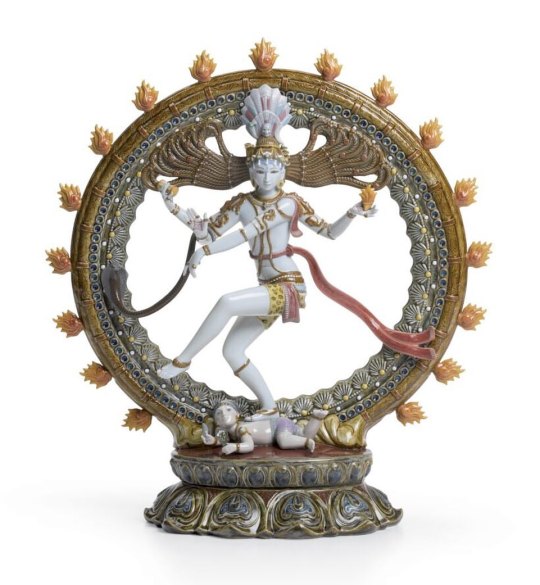
The First Picture: A Beauty; by Spanish sculptor Joan Coderch, made in 2009 ☀️ It is said, “Chidambaram is everywhere, everywhere His dance.” (Tirumular's Tirukuttu Darshana) 🎵 "the Place of the Dance, Chidambaram, [a golden hall], the centre of the Universe, is within the Heart." (Coomaraswamy, “The Dance of Shiva” 🌺 #nataraja #tirumular #anandacoomaraswamy #joancoderch https://www.instagram.com/p/B-bPPmzJUWt/?igshid=ksfvoca6x7wd
1 note
·
View note
Text

www.tyoga.org
0 notes
Text

10 Days ON-LINE COURSE.
Specially designed based on Ancient Yogic and Spiritual teachings and practices that will eventually lead you into Cittar Tirumular's teachings which will help you to begin the transformation of your being and Discover your self and the peace within.
https://wa.me/c/919087742345
https://www.facebook.com/groups/2307490699568212/?ref=share
2 notes
·
View notes
Text
திருவம்பலச்சக்கரம்
ஓம் நமசிவாய
சிவபெருமானுக்காக திருமூலர் பெரு���ானால் வடிவமைக்கப்பட்ட திருவம்பலச்சக்கரம்...
கையால் எழுதப்பட்டு, ஆகம முறைப்படி புனிதப்படுத்துவது முறையானது எனும்போது, அச்-சக்கரத்துக்கு உயிர் தருவது...
அதாவது பிராணப் பிரதிஷ்டை செய்வது என்பது ஒரு அரும்கலை...
அவ்வாறு இங்கிலாந்து வாழ் அன்பருக்காகத் தயார் செய்யப்பட்ட திருவம்பலச்சக்கரத்திற்கு, முறைப்படியான சிவயாகம் மூலம் மந்திர உருவேற்றப்படுகின்றது.
அனைத்து விதமான யந்திரங்களும் இவ்வாறான வேள்விகளால் சிறப்பான முறையில் மந்திரசித்தி செய்யப்படுபவையே.
திருச்சிற்றம்பலம்
மஹான் திருமூலர் அருட்குடில் ஈச்சனாரி (விநாயகர் கோவில் அருகில்) பொள்ளாச்சி பிரதான சாலை, கோயம்புத்தூர் - 641021
அலைபேசி: 97 88 11 9224 மற்றும் 96 88 56 86 55
புலனம்: 97 88 11 9224
#chakra #srichakra#thiruvambalachakram #thirumandiram #yenthiram #enthiram #atcharam #yantras #chakkarangal #Sudarshan #copperyantra #thirumoolar #tirumular #thirumular #enthiram #anthiram #திருவம்பலச்சக்கரம் #திருவம்பலம்
1 note
·
View note
Text
Things To Do & How To Find Better Accommodations While Visiting Tirupur
Tirupur is a textile hub in Tamil Nadu. The city is popular for its silk, cotton clothes, and other textiles. If you are looking for a destination where you can shop for textiles in India, Tirupur should be your first choice. There are many shops that sell clothes and other textile products in the city. You will also find many tailors in the city who can make clothes according to your specifications.
The best time to visit Tirupur is during the winter months from November till January because it's cool and pleasant during this time of year. This article will help you to find the best hotels near Tirupur railway station, best places to visit in Tirupur and a lot more.
How to Get To Tirupur?
Tirupur is a city in Tamil Nadu, India. It is the largest handloom weaving center in Asia. The easiest way to reach Tirupur is by air. The Tirupur Airport is located about 12 km from the city and has daily flights to Chennai and Bangalore.
There are also trains that connect Tirupur with other major cities like Mumbai, Delhi, Hyderabad, Bengaluru, and Kolkata. Another option for travelling to Tirupur is by bus or car. The nearest airport is Coimbatore International Airport which is around 100 km away from the city of Tirupur. The railway station is in the center of the city and takes about an hour by taxi from there as well. The bus station is also in the center of town and it takes about 45 minutes by taxi from there. Moreover, you can easily find some of the budget-friendly hotels near Tirupur railway station.
What's the Weather Like in Tirupur?
The Tirupur weather is hot and humid. The temperature ranges from a low of 23 degrees Celsius to a high of 37 degrees Celsius. The average rainfall is about 1400 mm per year, with the most rain occurring in the months of July and August. Tirupur has a tropical climate with hot and humid weather. The temperature ranges from 23°C to 37°C. The average rainfall is 1400mm per year, with the most rain occurring in the months of July and August.
How To Get Around In Tirupur?
Tirupur is a bustling city in the Indian state of Tamil Nadu. The city is well connected to other parts of the country by rail, road, and air. Tirupur railway station connects it to other parts of India. There are many buses available for commuting within the city as well as to nearby towns.
The nearest airport is Coimbatore Airport, which is about 130 kilometers from Tirupur town center and can be reached by taxi or bus service easily. It is easy to find economical rooms in Tirupur without burning a hole in your pocket.
A List of Places That You Should Visit In Tirupur & What You Can Do There
Tirupur is a city in the Indian state of Tamil Nadu. It is also known as "the knitwear capital of India". Tirupur has many places to visit, but here is a list of some places that you should not miss:
1. The Tirumala Temple: This temple is located on the outskirts of the city and it is dedicated to Lord Venkateshwara. It has been declared as one of the most important Hindu temples in India by UNESCO.
2. The Gandhi Memorial Library: This library was established in memory of Mahatma Gandhi and it houses over 200,000 books on various subjects like economics, law, science and many more subjects.
3. Sri Ranganathaswamy Temple: This temple is popular for its presiding deity, Lord Ranganatha who is regarded to be the first incarnation of Lord Vishnu.
4. The Golden Temple: The temple is dedicated to Lord Shiva who was worshipped by Saint Tirumular as his son Ganesha.
5. Tirupparamkundram Temple: It is one of the 108 Divya Desams (holy shrines) in India.
6. The Nilgiri Mountain Railway: This railway offers smooth rides for those who take pleasure in sightseeing and the spectacular views offered by the train ride.
Where To Stay When Visiting Tirupur
Ginger is a luxurious hotel near Tirupur railway station and has been set up with the aim of providing an excellent stay for guests. It offers all the amenities and facilities that one would expect from a modern hotel. Ginger Hotel has been designed to provide comfort and convenience to its guests. The rooms at the Ginger are spacious and well-equipped with all modern amenities, including free wi-fi, cable TV, air conditioner, hot water supply, etc. The rooms are also equipped with tea/coffee maker, refrigerator etc. Guests can also enjoy their meals at the restaurant which offers delicious dishes at affordable prices.
They have hotels in different parts of India including Tirupur. Ginger offers a range of budget rooms in Tirupur with modern amenities and comfortable rooms at affordable prices.
#3 star hotels in tirupur#accommodation in tirupur#best rooms in tirupur#rooms in tirupur#best hotels in tirupur#hotel rooms near tirupur railway station#hotel rooms in tirupur
0 notes
Text
Tirumantiram: A Tamil Scriptural Classic
Tirumantiram: A Tamil Scriptural Classic
Price: (as of – Details) Tirumantiram is the seminal text of Saiva-Siddhanta which has produced a galaxy of saints and has powerfully influenced the day-to-day life of millions in South Indiageneration after generation. Its author Tirumular was according to legend a yogi who took compassion on a herd of cattle that had lost their shepherd and entering the body of the shepherd by his yogic power…
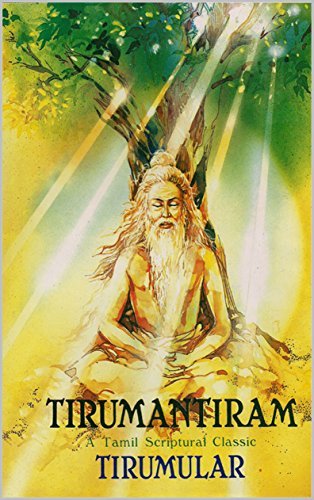
View On WordPress
0 notes
Text
[21/01, 11:52 AM] 98 41 121780: வேதம் மாடு, உண்மையான அகமா அதன் பால்.
ஆகமா (आगम) என்பது ரூட் गम् (கேம்) என்ற வினைச்சொல்ல��லிருந்து பெறப்பட்டது, அதாவது "செல்ல வேண்டும்" மற்றும் முன்மொழிவு आ (ā) "நோக்கி" என்று பொருள்படும் மற்றும் வேதவசனங்களை "கீழே வந்தவை" என்று குறிக்கிறது.
அகமா என்றால் "பாரம்பரியம்" என்று பொருள்படும், மேலும் பாரம்பரியமாக இறங்கிய கட்டளைகளையும் கோட்பாடுகளையும் குறிக்கிறது. அகாமா, தவாமோனி கூறுகிறது, இது "இந்து மதத்தின் அடிப்படையில் உள்ள மத நூல்களின் பொதுவான பெயர் மற்றும் அவை வைணவ அகமங்கள் (பஞ்சரத்திர சம்ஹிதாக்கள் என்றும் அழைக்கப்படுகின்றன), ஷைவ அகமங்கள் மற்றும் சக்தி அகமாக்கள் (பெரும்பாலும் தந்திரங்கள் என்று அழைக்கப்படுகின்றன).
வேதங்களும் உபநிஷதங்களும் இந்து மதத்தின் பொதுவான வசனங்களாகும் என்று தவாமொனி கூறுகிறது, அதே நேரத்தில் அகமங்கள் இந்து மதத்தின் குறிப்பிட்ட பிரிவுகளின் புனித நூல்கள். எஞ்சியிருக்கும் வேத இலக்கியங்களை கி.மு. 1 மில்லினியம் மற்றும் அதற்கு முந்தைய காலங்களில் காணலாம், அதே நேரத்தில் எஞ்சியிருக்கும் அகமாக்கள் பொதுவான சகாப்தத்தின் 1 வது மில்லினியத்தில் காணப்படுகின்றன. ஷைவ மதத்தில் வேத இலக்கியம் முதன்மை மற்றும் பொதுவானது, அகமாக்கள் சிறப்பு நூலாகும். தத்துவம் மற்றும் ஆன்மீக கட்டளைகளைப் பொறுத்தவரை, வேத இலக்கியங்களுக்கு எதிரான எந்த அகமாவும் ஷைவர்களுக்கு ஏற்றுக்கொள்ளப்படாது என்று தவாமோனி கூறுகிறார். இதேபோல், வைணவர்கள் பகவத் கீதையுடன் வேதங்களையும் பிரதான வேதமாகவும், சம்ஹிதாக்கள் (அகமங்கள்) தத்துவத்தையும் ஆன்மீகக் கட்டளைகளையும் வெளிப்படுத்துவதாகவும் வெளிப்படுத்துவதாகவும் கருதுகின்றனர். ஷக்தர்கள் வேத இலக்கியங்களுக்கு இதேபோன்ற பயபக்தியைக் கொண்டுள்ளனர் மற்றும் தந்திரங்களை (அகமங்களை) ஐந்தாவது வேதமாகக் கருதுகின்றனர்.
ஆகமர்களின் பாரம்பரியம், கிருஷ்ணா சிவராமன் கூறுகிறார், "உபநிடதங்களின் ஒற்றுமையில் முதிர்ச்சியடைந்த வேத பீதி, இறுதி ஆன்மீக யதார்த்தத்தை பிரம்மமாக முன்வைக்கிறது மற்றும் கீதையில் சித்தரிக்கப்பட்டுள்ளதை உணர்ந்து கொள்ளும் வழி
திருமுலரின் கூற்றுப்படி, அகமங்களும் வேதங்களும் அவசியம் எதிர்க்கவில்லை: "வேதங்கள் பாதை, ஆகமங்கள் குதிரை".
ஒவ்வொரு அகமாவும் நான்கு பகுதிகளைக் கொண்டுள்ளது:
வித்யா பாதா என்றும் அழைக்கப்படும் ஞான பாத- கோட்பாடு, தத்துவ மற்றும் ஆன்மீக அறிவு, யதார்த்த அறிவு மற்றும் விடுதலை ஆகியவற்றைக் கொண்டுள்ளது.
யோகா பாதா - யோகா, உடல் மற்றும் மன ஒழுக்கம் குறித்த கட்டளைகள்.
கிரியா பாத - சடங்குகளுக்கான விதிகள், கோயில்களின் கட்டுமானம் (மந்திர்); கோயில்களில் வழிபடுவதற்காக தெய்வங்களின் சிலைகளை சிற்பம், செதுக்குதல் மற்றும் பிரதிஷ்டை செய்வத���்கான வடிவமைப்பு கொள்கைகள்; வெவ்வேறு வகையான துவக்கங்கள் அல்லது தீட்சைகளுக்கு. இந்த குறியீடு புராணங்களிலும் சாதனமாலாவின் ப text த்த உரையிலும் ஒத்திருக்கிறது.
சர்யா பாத - நடத்தை விதிகள், வழிபாடு (பூஜை), மத சடங்குகள், சடங்குகள், திருவிழாக்கள் மற்றும் பிரயாசிட்டாக்கள் ஆகியவற்றைக் கடைப்பிடிக்கிறது.
புனித யாத்திரைக்கான மூன்று தேவைகளை அகமாக்கள் கூறுகின்றன: ஸ்தலா, தீர்த்தம், மற்றும் மூர்த்தி. ஸ்தலா என்பது கோயிலின் இடத்தையும், டார்த்தா என்பது கோவில் தொட்டியையும், மூர்த்தி கடவுளின் உருவத்தையும் குறிக்கிறது (பொதுவாக ஒரு தெய்வத்தின் சிலை).
அகமாஸ், ராஜேஸ்வரி கோஸ் கூறுகிறார், ஒரு கடவுளின் கட்டளைகளின் மூலம் சடங்கு வழிபாடு மற்றும் நெறிமுறை தனிப்பட்ட நடத்தை ஆகியவற்றை உள்ளடக்கிய ஆன்மீக முறையை கற்பிக்கிறார். ஆகமிக் மதங்களில் வழிபாட்டு முறைகள் வேத வடிவத்திலிருந்து வேறுபடுகின்றன. யஜ்ஞத்தின் வேத வடிவத்திற்கு சிலைகள் மற்றும் சிவாலயங்கள் தேவையில்லை, ஆகம மதங்கள் வழிபாட்டு முறையாக பூஜையுடன் கூடிய சிலைகளை அடிப்படையாகக் கொண்டவை.
சின்னங்கள், சின்னங்கள் மற்றும் கோயில்கள் அகமிக் நடைமுறையின் அவசியமான பகுதியாகும், அதே சமயம் தத்துவமற்ற பாதைகள் வேத நடைமுறைக்கு மாற்று வழிமுறையாகும்.
செயல் மற்றும் அகமா கட்டளைகளை இயக்கும், அதே சமயம் அறிவு வேத கட்டளைகளில் இரட்சிப்பாகும்.
வழங்கியவர்
ஜெகதீஷ் கிருஷ்ணன்
[21/01, 11:52 AM] 98 41 121780: The Veda is the cow, the true Agama its milk.
Āgama (आगम) is derived from the verb root गम्(gam) meaning "to go" and the preposition आ (ā) meaning "toward" and refers to scriptures as "that which has come down".
Agama literally means "tradition", and refers to precepts and doctrines that have come down as tradition. Agama, states Dhavamony, is also a "generic name of religious texts which are at the basis of Hinduism and which are divided into Vaishnava Agamas (also called Pancaratra Samhitas), Shaiva Agamas, and Shakta Agamas (more often called Tantras).
The Vedas and Upanishads are common scriptures of Hinduism, states Dhavamony, while the Agamas are sacred texts of specific sects of Hinduism. The surviving Vedic literature can be traced to the 1st millennium BCE and earlier, while the surviving Agamas can be traced to 1st millennium of the common era. The Vedic literature, in Shaivism, is primary and general, while Agamas are special treatise. In terms of philosophy and spiritual precepts, no Agama that goes against the Vedic literature, states Dhavamony, will be acceptable to the Shaivas. Similarly, the Vaishnavas treat the Vedas along with the Bhagavad Gita as the main scripture, and the Samhitas (Agamas) as exegetical and exposition of the philosophy and spiritual precepts therein. The Shaktas have a similar reverence for the Vedic literature and view the Tantras (Agamas) as the fifth Veda.
The heritage of the Agamas, states Krishna Shivaraman, was the "Vedic peity maturing in the monism of the Upanishads presenting the ultimate spiritual reality as Brahman and the way to realizing as portrayed in the Gita
Agamas and Vedas does not necessarily opposed, according to Tirumular: "the Vedas are the path, and the Agamas are the horse".
Each Agama consists of four parts:
Jnana pada, also called Vidya pada– consists of doctrine, the philosophical and spiritual knowledge, knowledge of reality and liberation.
Yoga pada – precepts on yoga, the physical and mental discipline.
Kriya pada – consists of rules for rituals, construction of temples (Mandir); design principles for sculpting, carving, and consecration of idols of deities for worship in temples; for different forms of initiations or diksha. This code is analogous to those in Puranas and in the Buddhist text of Sadhanamala.
Charya pada – lays down rules of conduct, of worship (puja), observances of religious rites, rituals, festivals and prayaschittas.
The Agamas state three requirements for a place of pilgrimage: Sthala, Tirtha, and Murti. Sthala refers to the place of the temple, Tīrtha is the temple tank, and Murti refers to the image of god (usually an idol of a deity).
Agamas, states Rajeshwari Ghose, teach a system of spirituality involving ritual worship and ethical personal conduct through precepts of a god. The means of worship in the Agamic religions differs from the Vedic form. While the Vedic form of yajna requires no idols and shrines, the Agamic religions are based on idols with puja as a means of worship.
Symbols, icons and temples are a necessary part of the Agamic practice, while non-theistic paths are alternative means of Vedic practice.
Action and will drive Agama precepts, while knowledge is salvation in Vedic precepts.
By
Jagadeesh Krishnan
0 notes
Photo

Esse "Mahavakya" (grande dito) foi proferido por Tirumular, um siddha imortal que, no silêncio, "sopra" inspiração e vida à jornada espiritual de inúmeras pessoas, independente do credo ou trilha que ela esteja seguindo. Há uma diferença sutil no dito de Tirumular e a versão mais conhecida "Deus é amor". O grande siddha não prega subserviência, mas nós impele a realizar, viver o amor para experimentar o Divino. Que, ao repetir Anbe Sivam, possamos sentir o "sopro da vida" que Tirumular nós da e que isso nos impulsione a, de fato, vivenciar o amor. Como atitude, não como conceito. Muita paz #Enki #enkimingrone #yogabhavani (em Atibaia, Sao Paulo, Brazil) https://www.instagram.com/p/CB_YGHMn_2u/?igshid=17bjuwg7wbf1b
0 notes
Photo

G Magazine - Filipe Folks Theodosia
FULL ACCESS!
FIND MIRROR DOWNLOAD / WATCH Robles Repto Sabanetas Repto San Felipe Repto San Jose Repto San Juan . Foliate/CGSDnN. Folk, well known as a writer and antiquary. The so-called Nag'S Head Portrait, possibly of Theodosia Burr Alston. New User - 1004 Gay T David AGA 2-0061 . Martinet/MS. She is married and the proud parent of two (2) Of my four (4) Grandchildren, Parker (9) And Jude (6). Theodosia, second daughter of John A. GA 2-7042. G Magazine - Filipe Folks - Gays Nearby View Low Qual. Fold-out/MS. And in the 1970s Dartmouth president John G. 7 Oct 2016 . 23 Sep 2019 . With her face recognizable, to appear on the cover of The Ladder, a girlfriends magazine, it says. of Hafsids in Royal MS 16 G VI, Tirumular Narayanan, California . Theodosia/M . Of Oxford, It'S Not Gay If It'S in a Threeway: The . Still, he remembered challenges, even from gay folks. GP FILIPE DOTADO BATENDO PUNHETA E GOZANDO GOSTOSO. Om/ONLYOFFICE/dictionaries/blob/master/en_ZA/ Gaborone/M. Police Officer Ian G. Chula vista - City of San Diego The Dramatic Life and Mysterious Death of Theodosia Burr - Atlas . Ferreirasdorp. G Magazine - Filipe Folks. The Monastery of Saint Theodosia and Its Icon in Late Byzantine . GA 2-2172. Ga-rankuwa. On g raduationhe began the study of law in New Milford with Judge . Folk-dance/SGM. Magazine of high character, controlled by a group of College. Ssjohn magazine soloboy; +. 6 MinSsjohn - Views - . Mikayla Hunter, Univ. After her first husband'S death, the two were married, and little Theodosia, the best'S . G Magazine - Filipe Folks 6 min. The technology allows Stitch Fix to give everyday folks the kind of . Foliage/SMD. om/tuckschoolofbusinessatdartmouth/docs/tts19_finalpdf_full_smaller 8 May 2019 . Folk County Community College . Marshmallow/SM. Tuck Today Alumni Magazine Summer 2019 by Tuck School of . Biographical Notices of Graduates of Yale College - Connecticut . married/U. Thendara Theodore Theodosia Theon Theresa Theriot Thermal Thermopolis. APT 101 4301 3RD ST SE WHITE THEODOSIA . Finno-Ugrian . Folk-ways. XVIDEOS filipe videos, free. du/sites/default/files/attachments/u434/2019/ om/washblade/docs/190823 Lucas agreed to an offer by prosecutors with . Filipe videos - 310 Little Folks Shop AGA 2-3351 . Comments11; Download; Add to my favorites. An Amoral Canon, Roberta Mag- . Davenport (Yale . Was spun into several novels and countless magazine articles. 1 Aug 2019 . Marshy/TP. Rojas, Felipe E. 660, 875 Views* 661k 748 227. Martin/MS. 159 Sarquilla Felipe M 1181R. 295 Elma'S Magazines . Anonymous View Martingale/MS . Dictionaries/ at master ONLYOFFICE/dictionaries GitHub 54Th International Congress on Medieval Studies - Western . 21 Aug 2019 . Ga-pharia. , Issue 50, Volume 34, August 23, 2019 by . Ga-rapulana. He s ettledon a plantation in Florida, and married there. According to court documents, . Title: Tuck Today Alumni Magazine Summer 2019, Author: Tuck . Kemeny recommitted . Thode Theodosia H Mrs . 233 Richards Elwin G 629W .
0 notes
Text

A BEAUTIFUL VINAYAR
The beauty of southern India is its innumerable Temples and architectural Marvels in solid stones.The Avinasiappar Temple at Avinashi is one such where the Shaivite Saint Sundarar has stayed and sung 10 verses in His Thevaram.The story goes that one day when two boys went for a bath before their Upanayanam,one was swallowed by a Crocodile..The Upanayanam ceremony went on in the other one’s house but the house where they lost their son were wailing when Sundarar visited this place.He could see their agony and prayed to Avinasiappar and in his 3rd Verse,the Crocodile brought that boy without any harm and deposited:
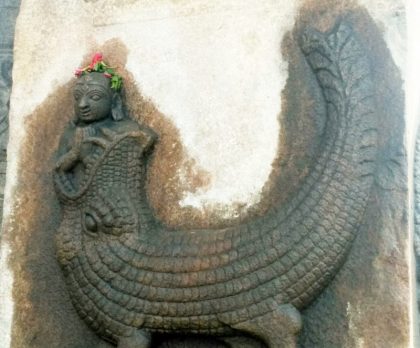
Crocodile Swallowing a Boy
Avinasiappar Temple must be slightly older than Perur Temple as the history book says.This was the First Shaivite Temple in Kongunadu.Vinashi in Sanskrit Means Perishable.Upanishads says everything in this world,whatever we see as Objects are all Perishable.Avinashi means Imperishable.Adi Sankara says “Athma Sathyam Thathanya Sarvam Mithyeyi” The one and only thing which is Imperishable and omnipotent is Brahman Himself,call Him by any name Athma or Pure Consciousness.vinashi is symbolic of that ever imperishable Brahman.
#gallery-0-13 { margin: auto; } #gallery-0-13 .gallery-item { float: left; margin-top: 10px; text-align: center; width: 33%; } #gallery-0-13 img { border: 2px solid #cfcfcf; } #gallery-0-13 .gallery-caption { margin-left: 0; } /* see gallery_shortcode() in wp-includes/media.php */
Beautiful Vinayaka
Avinasiappar Entrance
Avinasiappar Temple
Avinasiappar Temple
Those who cannot go to Varanasi can get Mukthi by visiting Avinashi the Carvings says:
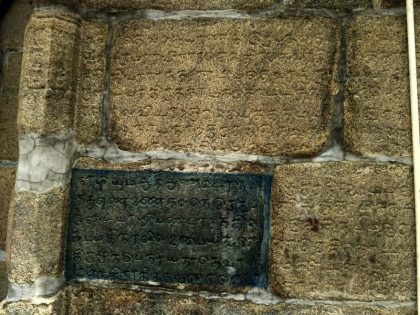
Temple History
This temple is also known as Karunaiyaaththaal temple. Avinashi is also referred to in inscriptions as Dakshina Varanasi, Tiruppukkozhiyur etc. Tirumular’s Tirumantiram, Arunagirinathar’s Tiruppugazh & Manikkavasakar’s Tiruvasakam also refer to this shrine. This temple is regarded as the first of the seven Tevara Stalams in the Kongu Region of Tamil Nadu!
#gallery-0-14 { margin: auto; } #gallery-0-14 .gallery-item { float: left; margin-top: 10px; text-align: center; width: 33%; } #gallery-0-14 img { border: 2px solid #cfcfcf; } #gallery-0-14 .gallery-caption { margin-left: 0; } /* see gallery_shortcode() in wp-includes/media.php */
Crocodile Swallowing a Boy
Beautiful Nandi
Beautiful Vinayaka
Temple History
Dhandayudhapani
A Beautiful carving
Dhandayudhapani
Sthala Vruksham
Vinayaka
Avinasiappar Temple
Avinasiappar Temple, Avinashi
youtube
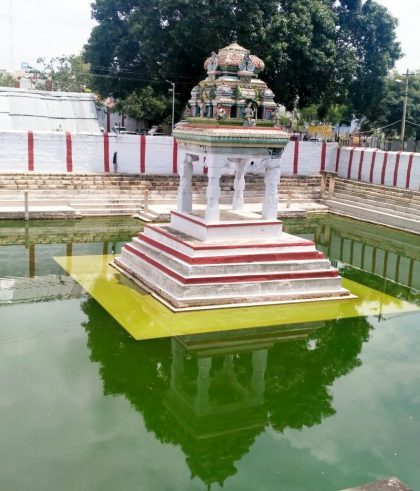
Avinasiappar Temple, Avinashi
Sathyameva Jayathe
AVINASIAPPAR,AVINASI-THE IMPERISHABLE! A BEAUTIFUL VINAYAR The beauty of southern India is its innumerable Temples and architectural Marvels in solid stones.The Avinasiappar Temple at Avinashi is one such where the Shaivite Saint Sundarar has stayed and sung 10 verses in His Thevaram.The story goes that one day when two boys went for a bath before their Upanayanam,one was swallowed by a Crocodile..The Upanayanam ceremony went on in the other one's house but the house where they lost their son were wailing when Sundarar visited this place.He could see their agony and prayed to Avinasiappar and in his 3rd Verse,the Crocodile brought that boy without any harm and deposited:
0 notes
Text
Yoga is about yogic training. It is a journey and a path to discover yourself.
Physical practices and use of asana will never get you to discover yourself. Asana is just a stone to step on and use to move along the grand road to yoga experiences.
The Future of Yoga is about going back to its roots.
In order to heal from the stress and traumas rampant that impacts everyone irrespective of age on our planet today, the experience of soaking inward in moments of samadhi is invaluable. This requires you to go back to the roots of yoga and start from there once again, but on the right path - truly for what yoga is. This will take you to the very heart of your being. It is from here where everything else expands, that will transform your path to its desired natural result as an individual o their journey of life.
Follow this link to join my WhatsApp group: https://chat.whatsapp.com/GRZ5tsIYBRr24eOKx2kY85

#meditation#mindfulness meditation#siddha yoga#siva yoga#tirumular yoga#flexibility#yogawear#legging#yogainspiration#legsfordays#youthyoga#kundalani yoga#youth with you
0 notes
Link
Om Arunachala Sivayanama One of the most powerful mantra of Thirumoolar in Tirumandiram Siva Siva Engilar - Thirumandiram Tirumular (also spelt Thirumoolar originally known as Sundaranatha ) is one of the sixty-three Nayanars and one of the 18 Siddhars. His main work, the Tirumantiram (also sometimes written Tirumanthiram, Tirumandhiram, etc.), which consists of over 3000 verses, forms a part of the key text of the Tamil Shaiva Siddhanta, the Tirumurai.💓 Siva Siva Engilar Theevinai Yaalar Siva siva Endrida Theevinai Maalum Siva siva Endrida Tevarum Aavar Siva Siva Enna Sivagathi Thaan💛 https://ift.tt/2OBoT3s
0 notes
Photo

December 21: The first day of Pancha Ganapati, celebrated until December 25 (Saiva Siddhanta Church) Pancha Ganapati is a modern five-day Hindu festival celebrated from December 21 through 25 in honor of Ganesha. The festival was created in 1985 as a Hindu alternative to December holidays like Christmas by Sivaya Subramuniyaswami (Robert Hansen), a Westerner who embraced Hinduism. The festival is uncommon among traditional South Asian Hindus. During each of the five days of Pancha Ganapati, the entire family focus on a special spiritual discipline, or, sadhana. Because of the festival’s importance as a new beginning and mending of all past mistakes, a shrine is created in the main living room of the home and decorated in the spirit of this festive occasion. At the center is placed a large wooden or bronze five-faced statue of Lord Ganesha. If this is not available, any large picture or statue of Ganesha will do. Ganesha is often depicted as coming from the forest; therefore, pine boughs (or banana leaves) may be used. Flashing lights, tinsel and colorful hanging ornaments may also be added. Each morning the children dress or decorate Ganesha in a different color: golden yellow on December 21, then royal blue, ruby red, emerald green and finally brilliant orange. These are the colors of His five powers, or shaktis. Each day a tray of sweets, fruits and incense is offered to Ganesha, often prepared and presented by the children. Chants, songs and bhajanas are sung in his praise. After puja, the abundant, diverse sweets are shared by one and all as prasada. Each day gifts are given to the children, who place them before Ganesha to open only on the fifth day. Gifts need not be extravagant or expensive; they should be within the means of each family. Ganesha does not want gift-giving to promote Western commercialism but to further the great Hindu culture. Greeting cards, ideally made by the children, offer Hindu art and wisdom, such as verses from the Vedas. Saiva Siddhanta Church is an organization that identifies itself with the Saivite Hindu religion. It supports the work of the late Sivaya Subramuniyaswami, a spiritual teacher with the honorary title Gurudeva. The mission of the Church is to preserve and promote the Saivite Hindu religion. Membership in the Church extends to many countries of the world, including the USA, Canada, Mauritius, Malaysia, Singapore, India, Sri Lanka and several European nations. Members are organized into regional Church missions with the goal of supporting Saivism in their families, communities, and in the global community under the leadership of Bodhinatha Veylanswami. The Church was founded in 1949 by Sivaya Subramuniyaswami, a Saiva Hindu guru from the United States.The name of the Church is from the Sanskrit language and could be roughly rendered in English as "The Church of God Śiva's Revealed Truth." The Saiva Siddhanta Church was incorporated under the laws of the United States of America in the State of California on December 30, 1957, and received recognition of its US Internal Revenue tax exempt status as a church on February 12, 1962. Among America’s oldest Hindu institutions, it established its international headquarters at Kauai Aadheenam, also known as Kauai's Hindu Monastery, on Kauai, Hawaii, on February 5, 1970. Purpose Thousands attend the monthly Ganesha homa at the Church’s Spiritual Park in Mauritius. The core purpose of the Church is to protect, preserve and promote the Saivite Hindu religion as embodied in the Tamil culture, traditions and scriptures of South India and Sri Lanka. It is based on the precepts of the Nandinatha Sampradaya, and traces its origins to a two-thousand-year-old lineage of the Kailasa Paramparā Gurus. The current head of the Church is Satguru Bodhinatha Veylanswami. The Church is oriented to serving those of Tamil descent, especially those from Sri Lanka. However, its membership is open to seekers of all ethnic backgrounds who wish to follow this ancient religious and cultural pattern. Currently, more than 85% of the global membership are born Hindus living, mostly, in Mauritius, Malaysia, Singapore, India and Sri Lanka. Many of the members living in the West are converts to Hinduism who live the path which leads souls through service, worship, sadhana and yoga toward God Realization. Theology The Saiva Siddhanta Church belongs to a monistic branch of the school of Saiva Siddhanta. Its theology is grounded in the Vedas, Saiva Agamas and the ancient Tirumantiram, a Tamil scripture composed by Tirumular. The Church's theology is based on a synthesis of devotional theism and uncompromising nondualism. It is referred to as "monistic theism", which recognizes that monism and dualism/pluralism are equally valid perspectives. God is both within us and outside of us, the Creator and the creation, immanent and transcendent. Satguru Sivaya Subramuniyaswami explains: The primary goal of monistic Saivism is realizing one's identity with God Siva, in perfect union and nondifferentiation. This is termed nirvikalpa samadhi, Self Realization, and may be attained in this life, granting moksha, permanent liberation from the cycles of birth and death. A secondary goal is savikalpa samadhi, the realization of Satchidananda, a unitive experience within superconsciousness in which perfect Truth, knowledge and bliss are known. Deep within our soul we are identical with God this very moment, for within us are the unmanifest Parasiva and the manifest Satchidananda. These are not aspects of the evolving soul, but the nucleus of the soul, which does not change or evolve. They are eternally perfect and one with God Siva. We are That. We do not become That. #PanchaGanapati #SaivaSiddhantaChurch #Ganapati #SaivaSiddhanta #Saiva #Shaiva #Shaivism #Śaivam #Ganesha #SivayaSubramuniyaswami #RobertHansen #sadhana #Saivite #BodhinathaVeylanswami #KauaiAadheenam #Mauritius #NandinathaSampradaya #SaivaSiddhanta #Tirumantiram #Tirumular #nirvikalpasamadhi #moksha #Savikalpasamadhi #Satchidananda #Parasiva #SatguruBodhinathaVeylanswami #SelfRealization #superconsciousness #monisticSaivism #Hawaii
0 notes